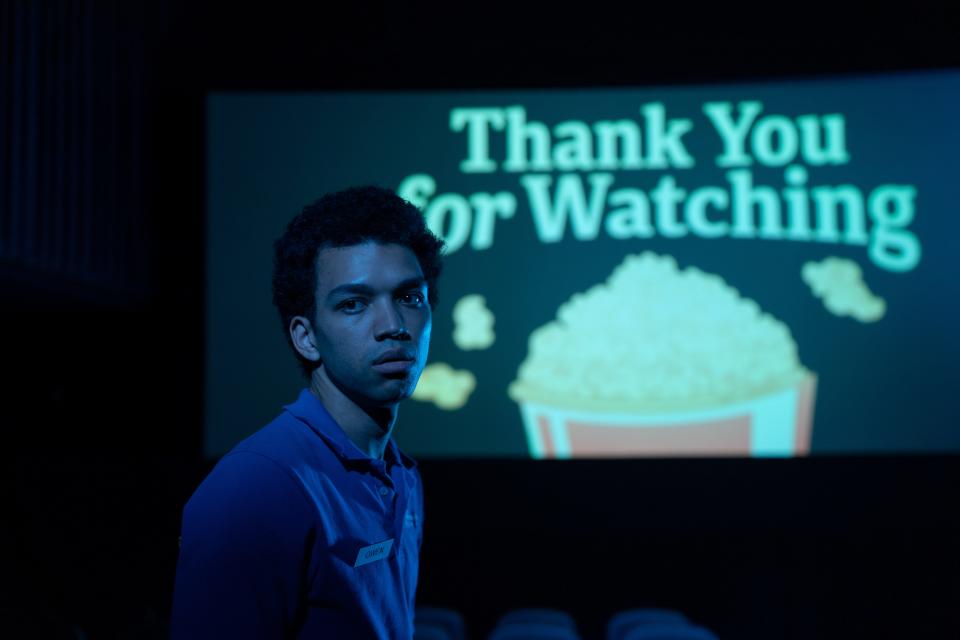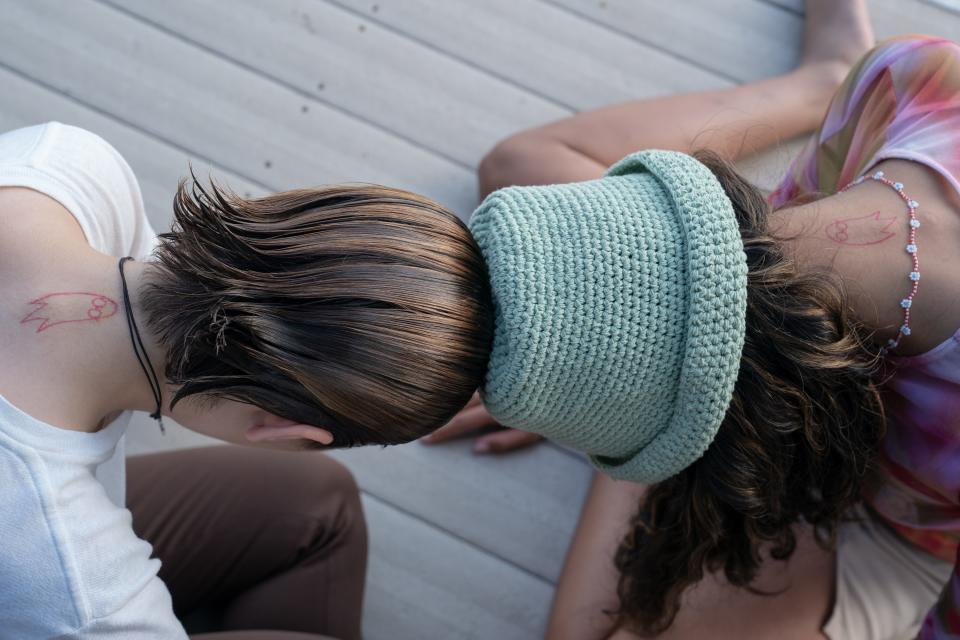'I Saw the TV Glow' is a Day-Glo thriller that'll haunt you — whether you get it or not
- Oops!Something went wrong.Please try again later.
- Oops!Something went wrong.Please try again later.
- Oops!Something went wrong.Please try again later.
“I Saw the TV Glow” feels as much like a participatory cinematic experience as it does watching a movie.
From the first Day-Glo colors on a dark street looking like something out of a black-light nightmare through the twists of a story that is purposefully just out of reach (while still powerful), it requires your attention, but also your buy-in; you’re either on the bus or off the bus, as Ken Kesey used to say. And if you’re on, it’s a thrilling, moving and occasionally confounding ride.
Jane Schoenbrun’s film is at once a spot-on depiction of 1990s pop culture and its consumption as well as a story of trans discovery — more literal in the first instance than the second. At times it’s hard to know what we’re watching. If you’re looking for a linear story with easy answers and firm resolutions, you won’t find it here.

What is 'I Saw the TV Glow' about? It's complicated
What you will find is a harrowing journey through adolescence, and how finding yourself in something like a TV show can feel like salvation — or danger.
Owen (played by Ian Foreman as a boy and Justice Smith as a teenager and adult) tags along with his parents while they vote. He sees Maddy (Brigette Lundy-Paine) sitting by herself, poring over the episode guide to “The Pink Opaque,” a TV show on the Young Adult Network. It’s an amalgam of a lot of existing shows, but none more than “Buffy the Vampire Slayer,” complete with a monster of the week and a Big Bad — Mr. Melancholy. That’s an excellent choice; few shows aimed at teens were as good at portraying the horrors of high school, only in this case they were literal.
Owen has been interested in the show but his parents won’t let him stay up till 10:30 on Saturday nights to watch it. Maddy hatches a plan: Owen will tell his parents he’s having a sleepover with a friend and instead come over to her house and watch. Maddy is absorbed. Owen is interested, but also interested in watching Maddy, who cries during one scene.
They bond over the show, which Maddy tapes on her VCR. Maddy is gay, and feels alone. She asks Owen whether he likes boys or girls. “I think that I like TV shows,” he laughs. Then he grows more serious: “When I think about that stuff, it feels like someone took a shovel and dug out all of my insides, and I know there’s nothing in there, but I’m still too nervous to open myself up and check.”

Even if you don't understand it, you won't forget 'I Saw the TV Glow'
Maddy wants to escape the town, her abusive father, everything, and wants Owen to join her. He bails on the plan and Maddy disappears, leaving behind a burning TV in her yard.
Years pass. Owen gets older, more or less settles down, though he still feels off, unsettled. Then one day Maddy returns. She is changed, antsy, antic, and will only explain her absence to Owen in a club reminiscent of The Bronze on “Buffy the Vampire Slayer” (Phoebe Bridgers is playing there) — a club that exists in “The Pink Opaque.” To say that reality and fantasy intertwine only hints at what’s to come.
The story is told in flashbacks, with Owen thinking back on his life, or so it seems. Schoenbrun, who also wrote the script, increasingly untethers the show from reality. Owen’s life, and his inability to connect with himself and the world around him, becomes a kind of nightmare (complete with the Day-Glo colors we have seen throughout).
Schoenbrun’s direction is masterful, both in terms of what they get out of the actors (Smith and Lundy-Paine give committed performances) and in their visual language. The look of the film is both haunting and inviting — not unlike that of a nightmare, or a horror film. “I Saw the TV Glow” has elements of both, and more. At times I’m not sure I fully understood it. But I’m sure that I won’t forget it.
'A little unconventional': How ABC 15's Christel Bell landed in a newsroom
'I Saw the TV Glow' 4 stars
Great ★★★★★ Good ★★★★
Fair ★★★ Bad ★★ Bomb ★
Director: Jane Schoenbrun.
Cast: Justice Smith, Brigette Lundy-Paine, Ian Foreman.
Rating: Rated PG-13 for violent content, some sexual material, thematic elements and teen smoking.
How to watch: In theaters Friday, May 17.
Reach Goodykoontz at bill.goodykoontz@arizonarepublic.com. Facebook: facebook.com/GoodyOnFilm. X: @goodyk. Subscribe to the weekly movies newsletter.
Subscribe to azcentral.com today. What are you waiting for?
This article originally appeared on Arizona Republic: 'I Saw the TV Glow' review: Jane Schoenbrun's black-lit 90s nightmare

